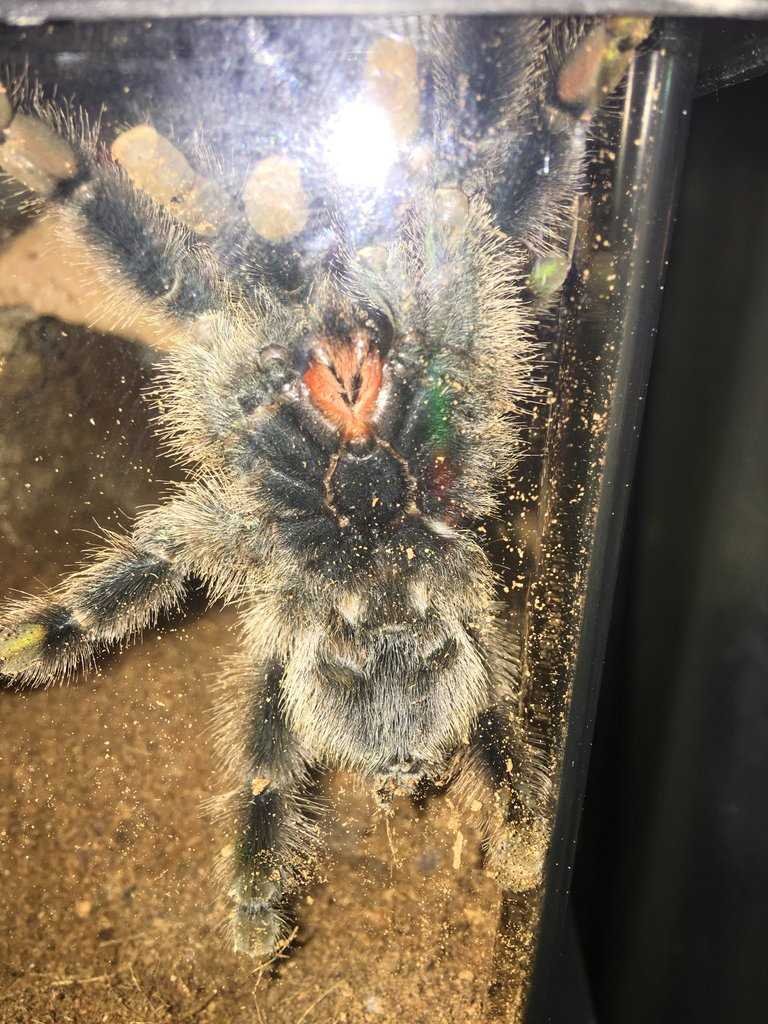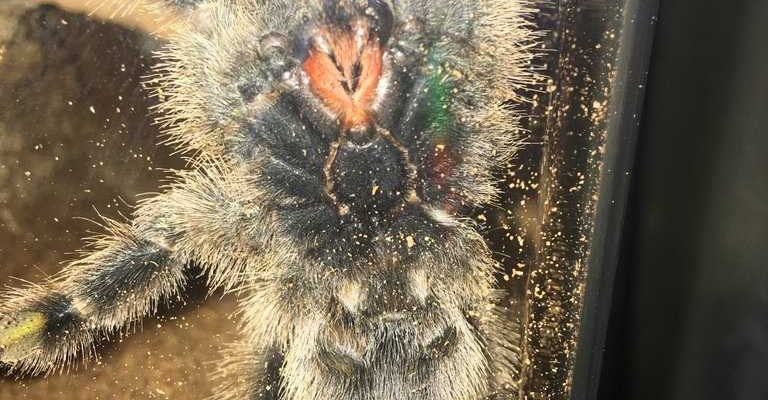
Let me break it down for you. The Pink Toe Tarantula, officially known as *Avicularia avicularia*, is native to the lush rainforests of South America. Its distinct pinkish hues on the tips of its legs can make it seem almost exotic and lively compared to other tarantulas, which often have muted colors and different temperaments. Understanding how the Pink Toe Tarantula differs from its tarantula cousins can help you appreciate its unique traits and may even sway your decision if you’re considering one as a pet.
Physical Characteristics: What Sets the Pink Toe Apart
When you first lay eyes on a Pink Toe Tarantula, you’re likely to be struck by its striking appearance. These tarantulas have a rich, dark body adorned with vibrant pink or orange markings on their toes. This is quite different from most tarantulas that tend to have a more uniform or dull coloration. Their striking colors are more than just pretty; they serve as camouflage in their natural habitat, blending in with the colorful foliage of the rainforest.
In contrast, many other tarantulas like the Brown Recluse or the Goliath Bird Eater have muted browns and grays. This can make them seem less appealing, especially to those who find beauty in vibrant colors. The Pink Toe also has a more slender and agile build compared to its bulkier cousins, making it a bit more graceful as it moves. You might picture other tarantulas as lumbering giants, while Pink Toes exhibit a kind of aerial finesse, often climbing with ease.
Behavior: The Personality Factor
One of the most fascinating aspects of the Pink Toe Tarantula is its behavior. Generally, these tarantulas are known for being more social compared to other types. While many tarantulas prefer solitude and tend to hide away, Pink Toes can be more curious and willing to explore. They are often seen climbing on branches and webbing their environment, which brings a lot of life to their enclosures.
You might be wondering how this translates to pet care. Well, if you’re considering owning a tarantula, the Pink Toe’s more active nature can make it a more engaging pet. On the flip side, tarantulas like the Chilean Rose are usually more docile and can be less entertaining to watch. If you want a tarantula that’s a little more lively and might even exhibit playful behavior, the Pink Toe could be the perfect fit.
Habitat Preferences: Where Each Tarantula Calls Home
The natural habitat of the Pink Toe Tarantula is another area where it differs significantly from its relatives. These little creatures thrive in the humid, warm environments of tropical rainforests, often in trees or high up in shrubs. They build their silk webs in the foliage, which helps them catch prey while also providing security from predators.
Conversely, many other tarantulas, like the Texas Brown Tarantula, prefer arid, dry environments and tend to burrow in the ground. This difference in habitat not only influences how they behave in the wild but also affects how you should care for them as pets. If you choose to keep a Pink Toe, you’ll need to replicate that humid environment, using things like a substrate that holds moisture and a water dish for hydration.
Diet: Feeding Differences Among Tarantulas
When it comes to feeding, Pink Toe Tarantulas and their relatives share some similarities but also have crucial differences. They’re both carnivorous, meaning they thrive on a diet of insects and small creatures. However, because Pink Toes are arboreal, they tend to prefer smaller prey that they can easily catch while climbing.
In contrast, ground-dwelling tarantulas might feast on larger insects like crickets or even small mice, depending on their size. The Pink Toe’s diet often consists of smaller crickets, mealworms, and the occasional fruit fly. This difference in dietary needs means that if you’re caring for a Pink Toe, you’ll need to be mindful of size and type when selecting their meals.
Care Requirements: What You Need to Know
Taking care of a Pink Toe Tarantula involves some specific requirements that may differ from other tarantulas. For starters, they need a well-ventilated enclosure with plenty of vertical space since they love to climb. It’s like giving them their own little jungle gym! A terrarium with high humidity levels is crucial, too, as this mimics their rainforest habitat.
In contrast, many ground-dwelling tarantulas can be kept in more straightforward setups because they don’t require as much vertical space or humidity control. For Pink Toes, you’d typically want to maintain humidity levels between 60-80% and temperature ranges of about 75-82°F. This adds another layer of complexity to their care, but it’s worth it for those vibrant, curious little spiders.
Pet Ownership: Are Pink Toes Right for You?
If you’re contemplating adding a Pink Toe Tarantula to your family, you might be curious about compatibility with your lifestyle. These spiders can make great pets for enthusiasts, especially those who enjoy observing unique animal behavior. They tend to be less skittish than other tarantulas, which can make handling a bit easier for those experienced in spider care.
However, they’re not ideal for everyone. If you’re looking for a low-maintenance pet, you might want to consider a different type of tarantula. Pink Toes require more attention to their habitat’s humidity and temperature. Also, if you’re squeamish about spiders, even the vibrant beauty of a Pink Toe might not be enough to ease your fears!
The Pink Toe Tarantula is truly a unique creature, full of personality and charm. Whether you’re captivated by its stunning appearance, curious behavior, or specific care needs, it offers a glimpse into the vibrant world of tarantulas. Understanding these differences not only helps you relate better to your Pink Toe but also enhances your appreciation for all kinds of tarantulas.
So, if you’re considering which tarantula to keep, weigh these differences carefully. The Pink Toe may be a more engaging and lively choice, but it comes with its own set of needs and nuances that you’ll need to embrace. With the right preparation and understanding, a Pink Toe Tarantula could just become your favorite little eight-legged friend.

